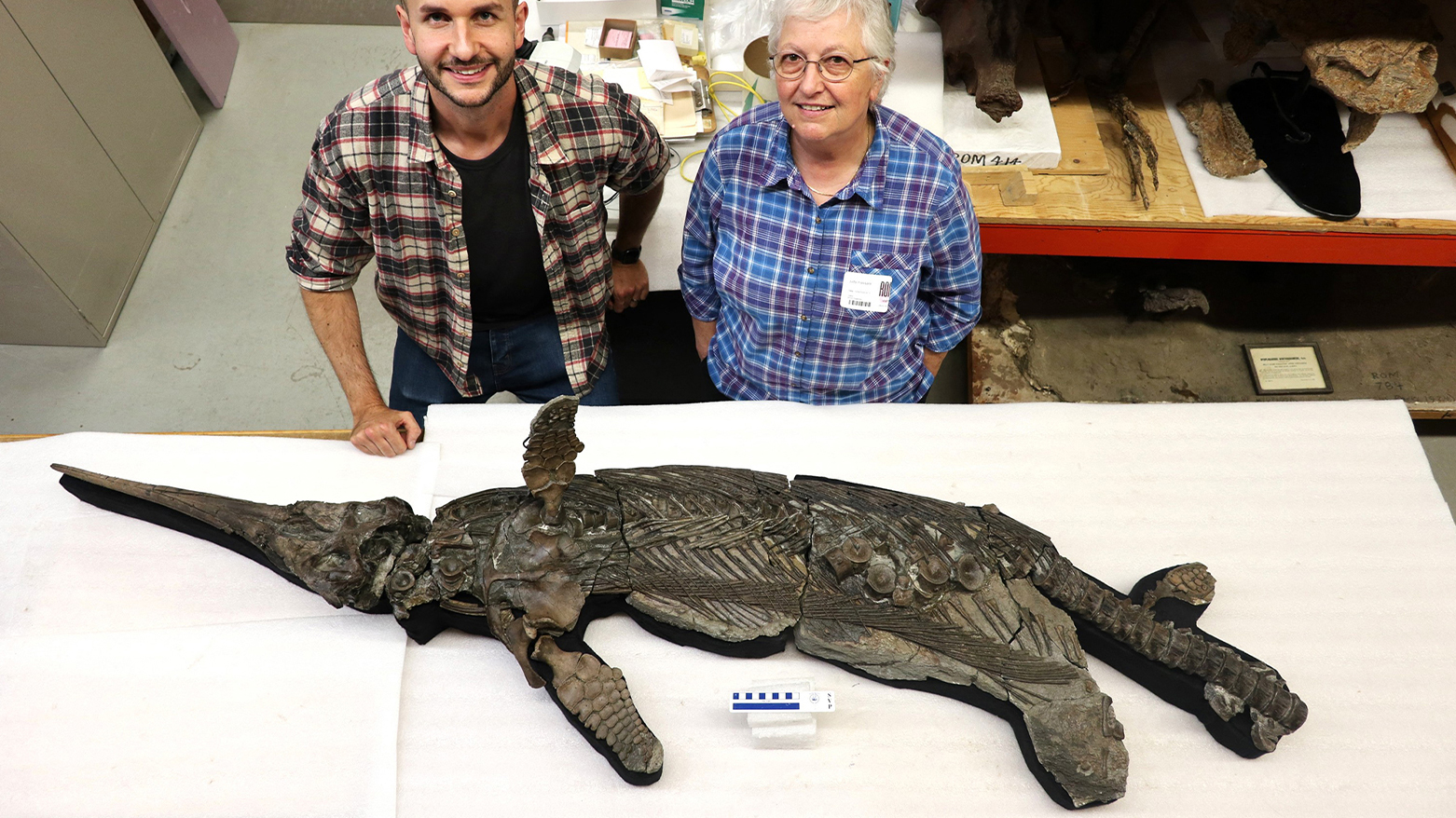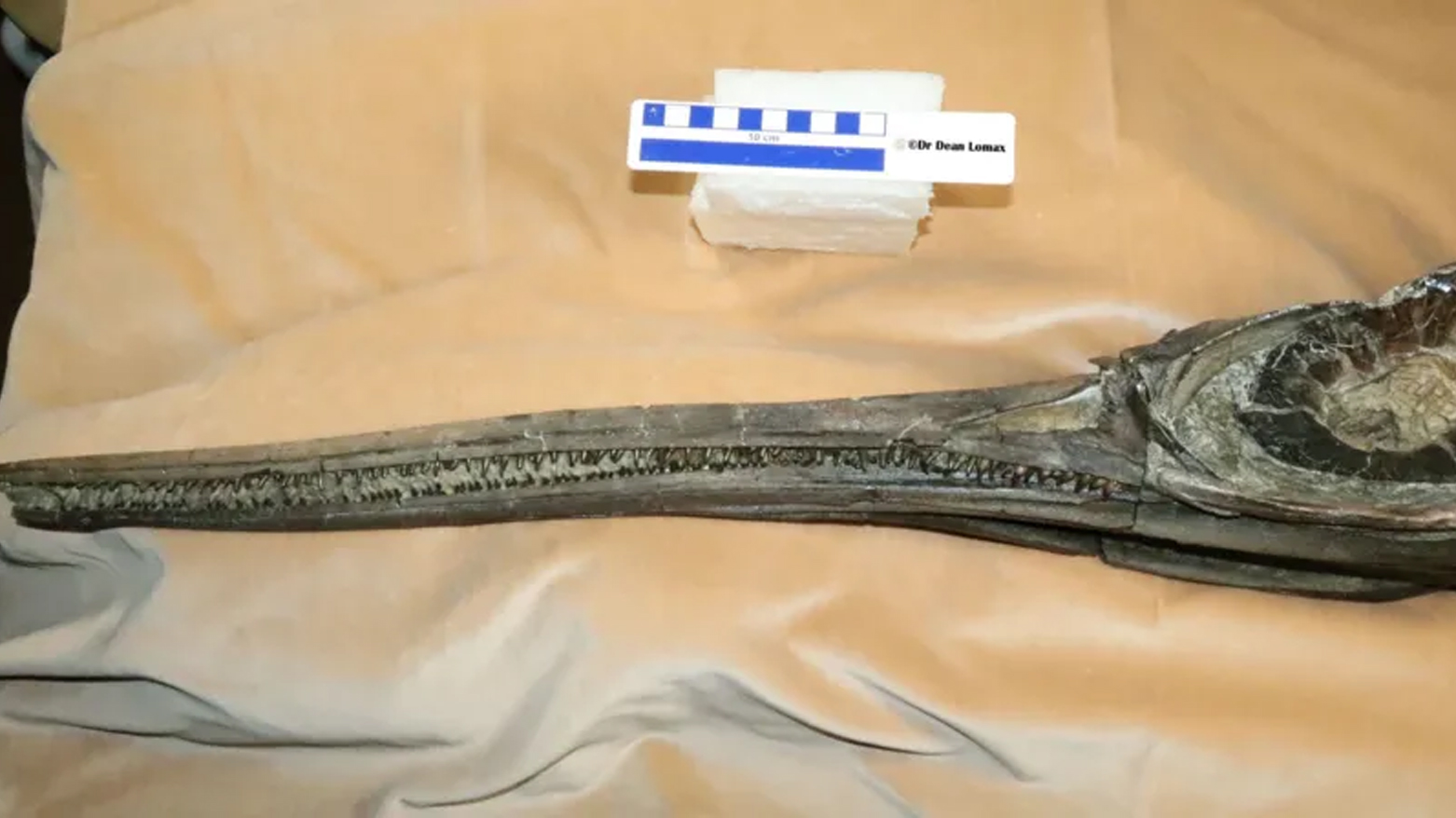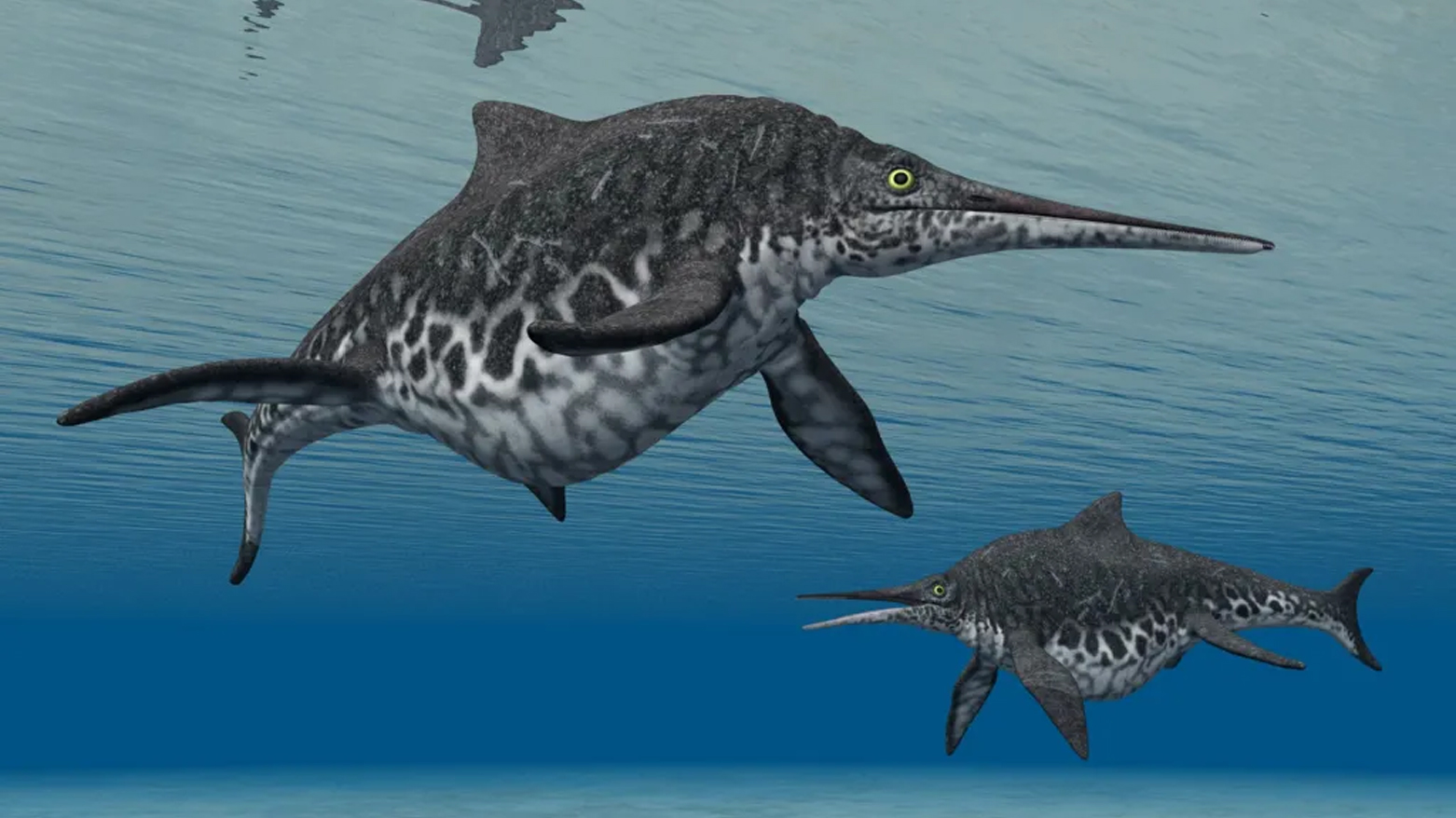New ‘Sword Dragon’ Fossil Unearthed on England’s Jurassic Coast
A near-complete 190-million-year-old fossil found on Dorset's Jurassic Coast has been identified as a new "sword dragon" ichthyosaur species.

ERBIL (Kurdistan24) - In a remarkable discovery that has provided a crucial new window into the prehistoric past, a near-complete fossilized skeleton unearthed on the famed Jurassic Coast of Dorset, England, has been officially identified as a brand new species of ichthyosaur, a formidable marine reptile that patrolled the ancient oceans approximately 190 million years ago.
The dolphin-sized creature, which has been christened Xiphodracon goldencapensis, or the "Sword Dragon of Dorset," is being hailed by scientists as a "missing piece of the ichthyosaur puzzle," a find that helps fill a significant gap in the fossil record and sheds new light on a critical period of evolutionary change.
The beautifully preserved specimen, which even bears the dramatic scars of a violent life and a likely brutal death, is the first new species of its kind to be named from the area in over a century, a testament to both the rich paleontological heritage of the region and the patient, meticulous work of modern science.
The skeleton was first discovered in 2001 in the cliffs near Golden Cap, a well-known fossil-hunting location on the Dorset coast, by a prolific local collector named Chris Moore.
According to reports from ITV News and the BBC, the fossil was subsequently acquired by the Royal Ontario Museum in Canada, where it remained for more than 15 years before being fully and exhaustively analyzed by a team of experts.
That detailed analysis, led by renowned ichthyosaur expert Dr. Dean Lomax from the University of Manchester, has now confirmed that the specimen represents a previously unknown species. The research, co-authored by Dr. Lomax and Dr. Erin Maxwell from the State Museum of Natural History Stuttgart, was published on Friday in the prestigious journal Papers in Palaeontology.
The newly identified species, Xiphodracon, is a stunning example of the creatures that once ruled the Mesozoic seas. Ichthyosaurs, it is important to note, were marine reptiles, not dinosaurs, and spent their entire lives in the water, evolving a streamlined, dolphin-like body shape.
This particular individual would have been about three meters (approximately 10 feet) long and was a formidable predator in its own right. Its name, as explained by Dr. Lomax, was carefully chosen to reflect its most striking features. "I thought long and hard about the name," he told the BBC.
"Xiphodracon translates to sword-like dragon and that is in reference to that very long, sword-like snout, but also the fact that ichthyosaurs have been referred to as sea dragons for about 200 years." This long, blade-like snout, combined with huge eyes adapted for hunting in the deep, would have made it an effective predator of fish and squid.

The significance of the discovery lies not just in the identification of a new species, but in the specific time period from which it comes.
The Sword Dragon dates back to the Pliensbachian period of the Early Jurassic, around 190 million years ago. "During this time ichthyosaurs are incredibly rare, and Xiphodracon is the most complete individual ever found from there, helping to fill a gap," Dr. Lomax explained to the BBC. He described the find as "a missing piece of the puzzle in the ichthyosaur evolution," a sentiment echoed in his comments to ITV News.
"Xiphodracon is something you might call a missing piece of the ichthyosaur puzzle,” he said. "It is more closely related to species in the later Early Jurassic, and its discovery helps pinpoint when the faunal turnover occurred, being much earlier than expected.” This suggests that the evolutionary changes among ichthyosaurs during this critical period happened faster and earlier than previously understood.
The skeleton itself is a remarkable and poignant artifact, telling a vivid story of a life filled with hardship and a violent end.
As reported by the BBC, Dr. Erin Maxwell noted that "The limb bones and teeth are malformed in such a way that points to serious injury or disease while the animal was still alive." This indicates that the Sword Dragon had survived previous traumas. However, the clues to its demise are etched directly onto its skull.
Both ITV News and the BBC reported that marks on the skull, particularly around its enormous eye socket, strongly suggest that the creature was attacked by a much larger predator.
"The skull appears to have been bitten by a large predator - likely another much larger species of ichthyosaur - giving us a cause of death for this individual," Dr. Maxwell stated. "Life in the Mesozoic oceans was a dangerous prospect."
The specimen also possesses several unique anatomical features that distinguish it from any other known ichthyosaur. Scientists have noted the presence of a strange, prong-like bone near its nostril, a detail that has not been seen in any other species and whose function is not yet understood.

The discovery of the Sword Dragon is the latest chapter in the long and storied history of paleontology on Dorset's Jurassic Coast, a UNESCO World Heritage site.
This is the same stretch of coastline where the pioneering fossil hunter Mary Anning made her groundbreaking discoveries of ichthyosaurs and other prehistoric creatures in the early 1800s, discoveries that fundamentally changed humanity's understanding of life on Earth. The man who found the Sword Dragon, Chris Moore, is a worthy successor to this tradition.
As he told the BBC in a video call from Dorset, "I don't wish to blow my own ichthyosaur trumpet but I have found a few of them."
The actual number he has unearthed is in the region of 15, with several of them, including this latest find, turning out to be entirely new to science. When asked how he planned to celebrate this latest and most significant discovery, Mr. Moore was characteristically understated: "Champagne or a mug of tea, I'm not sure which yet."
The fossil of the Sword Dragon is now part of the permanent collection of the Royal Ontario Museum in Toronto, Canada, where, as reported by ITV News and AFP, it will soon go on public display.
This will give the public a chance to come face to face with this remarkable creature, a "sea dragon" from a lost world that, thanks to a chance discovery on a Dorset beach and years of patient scientific work, has now been brought back into the light.
